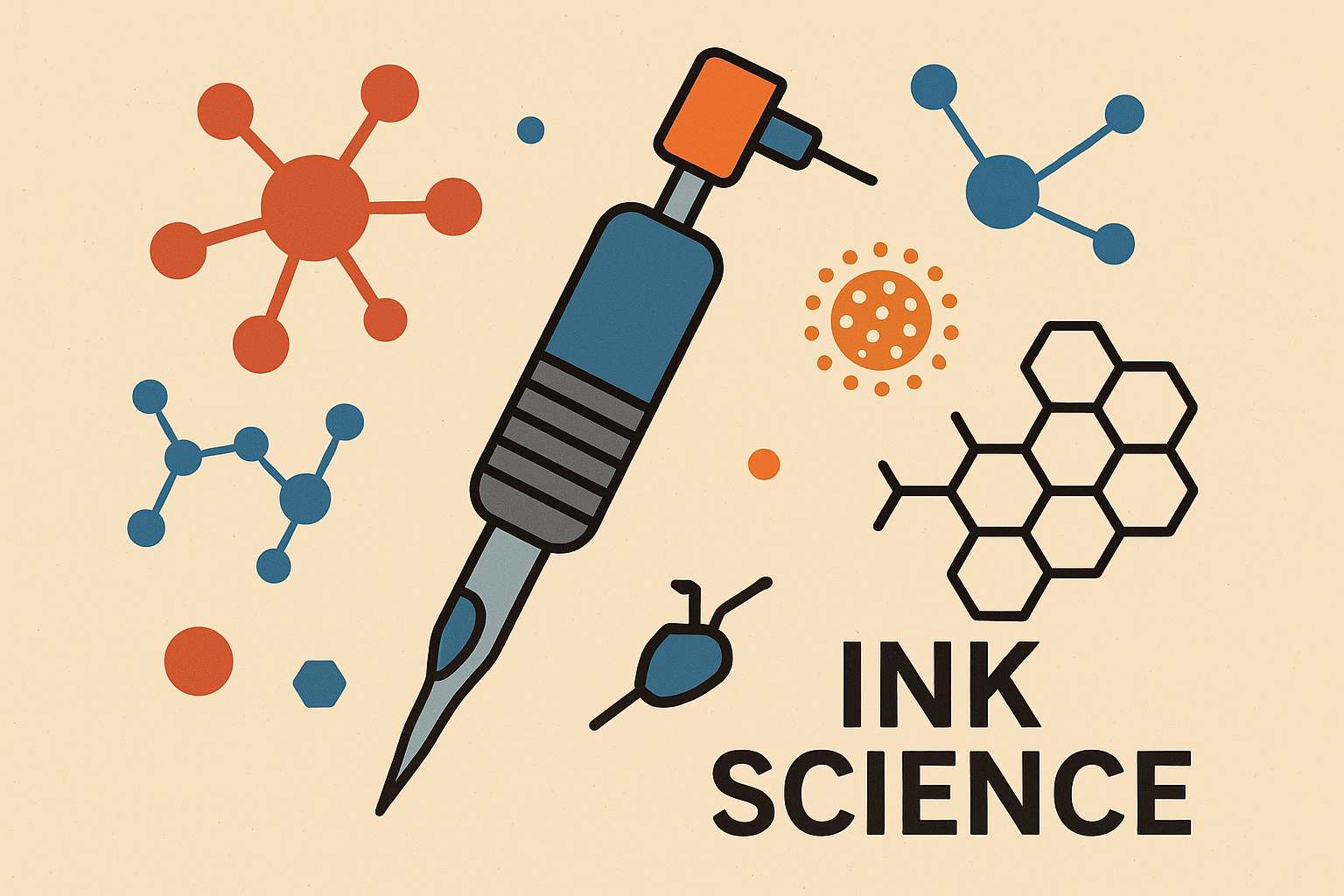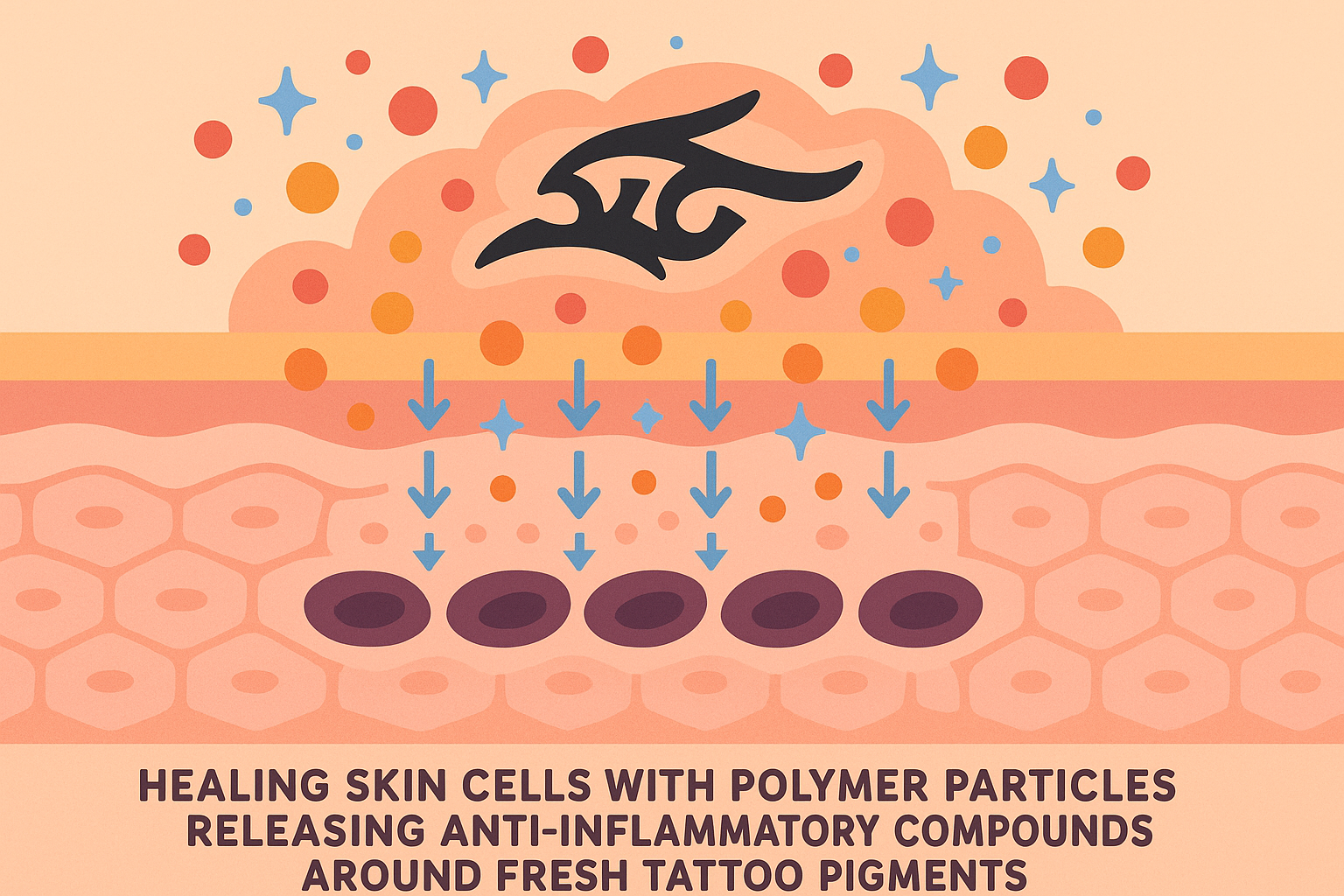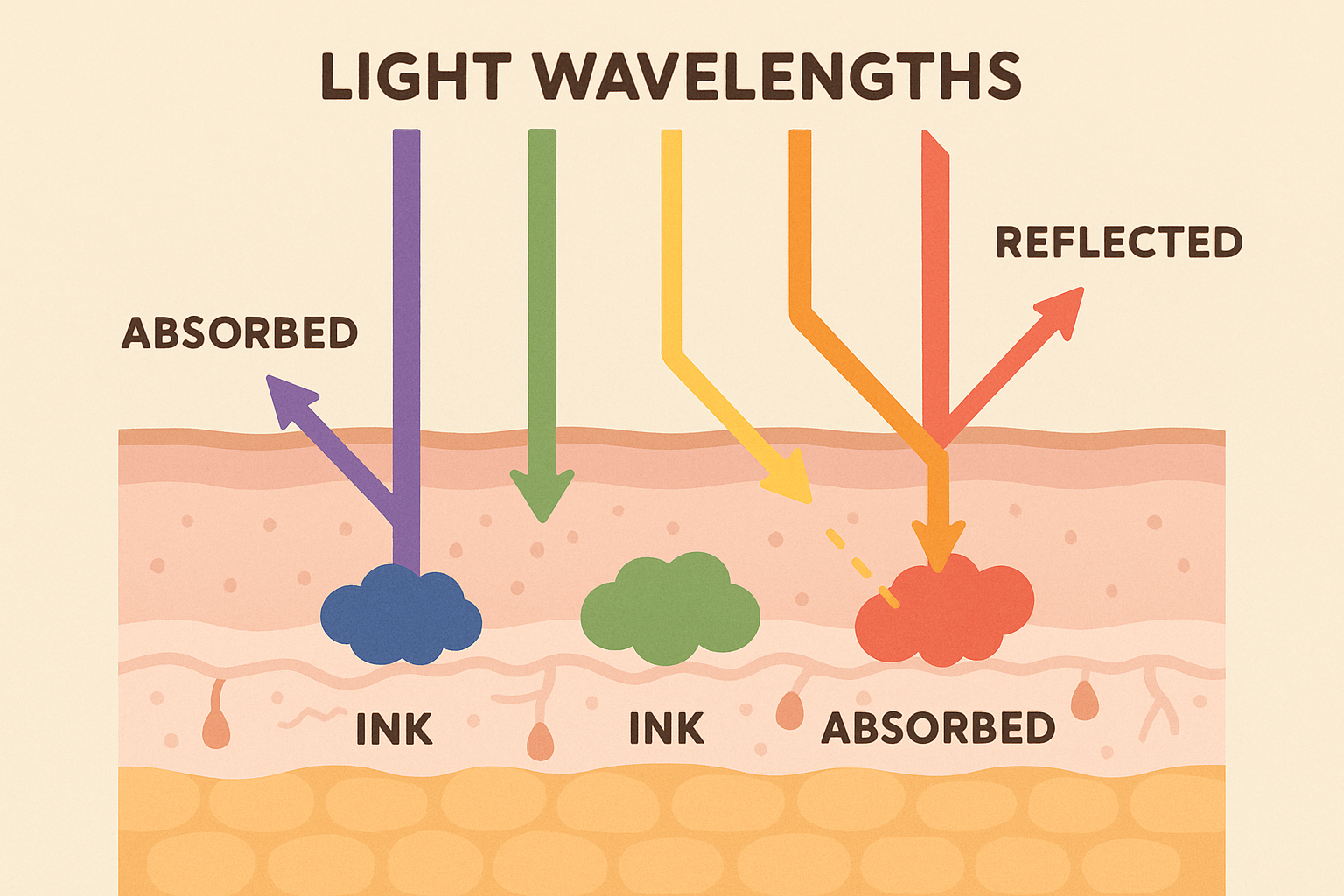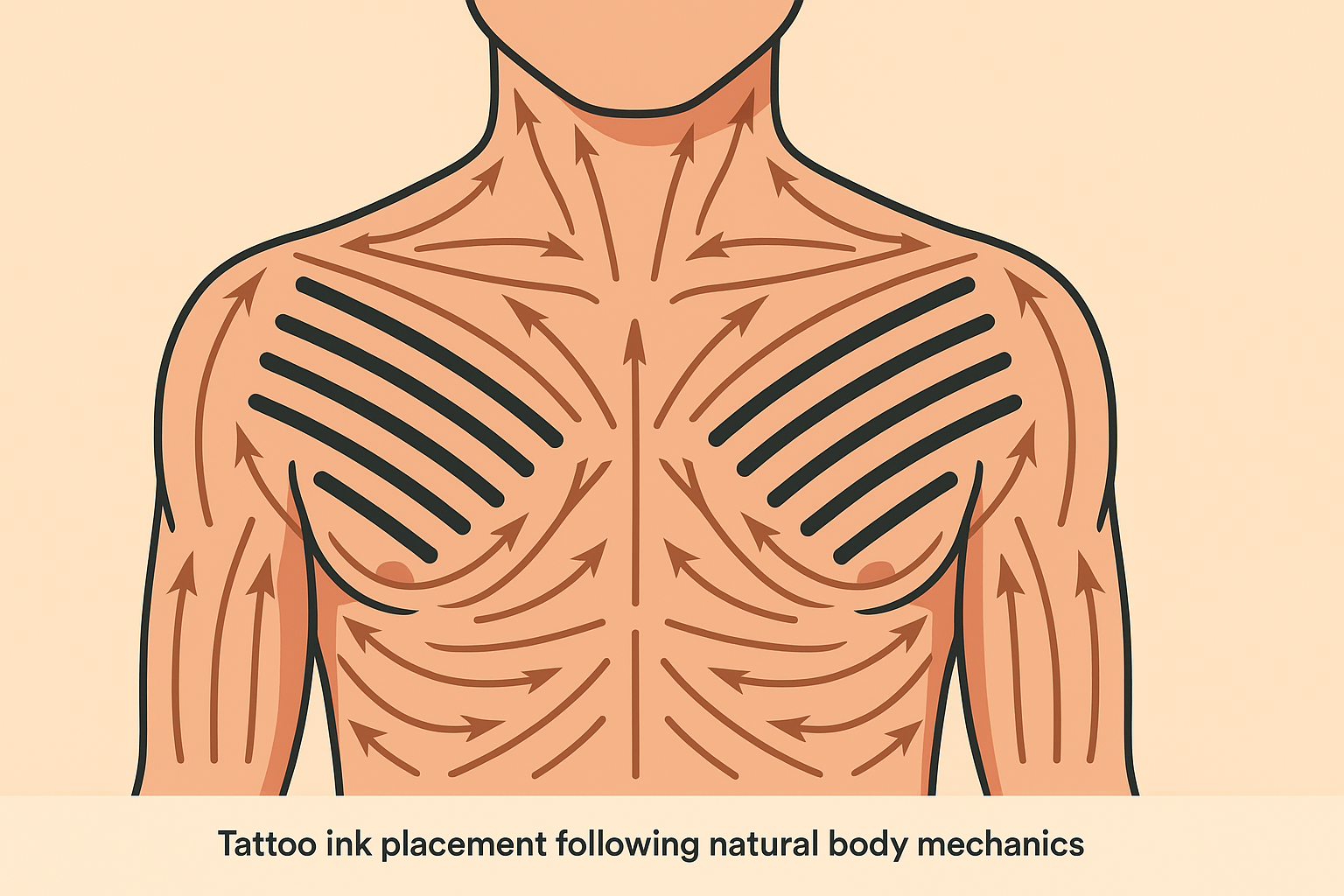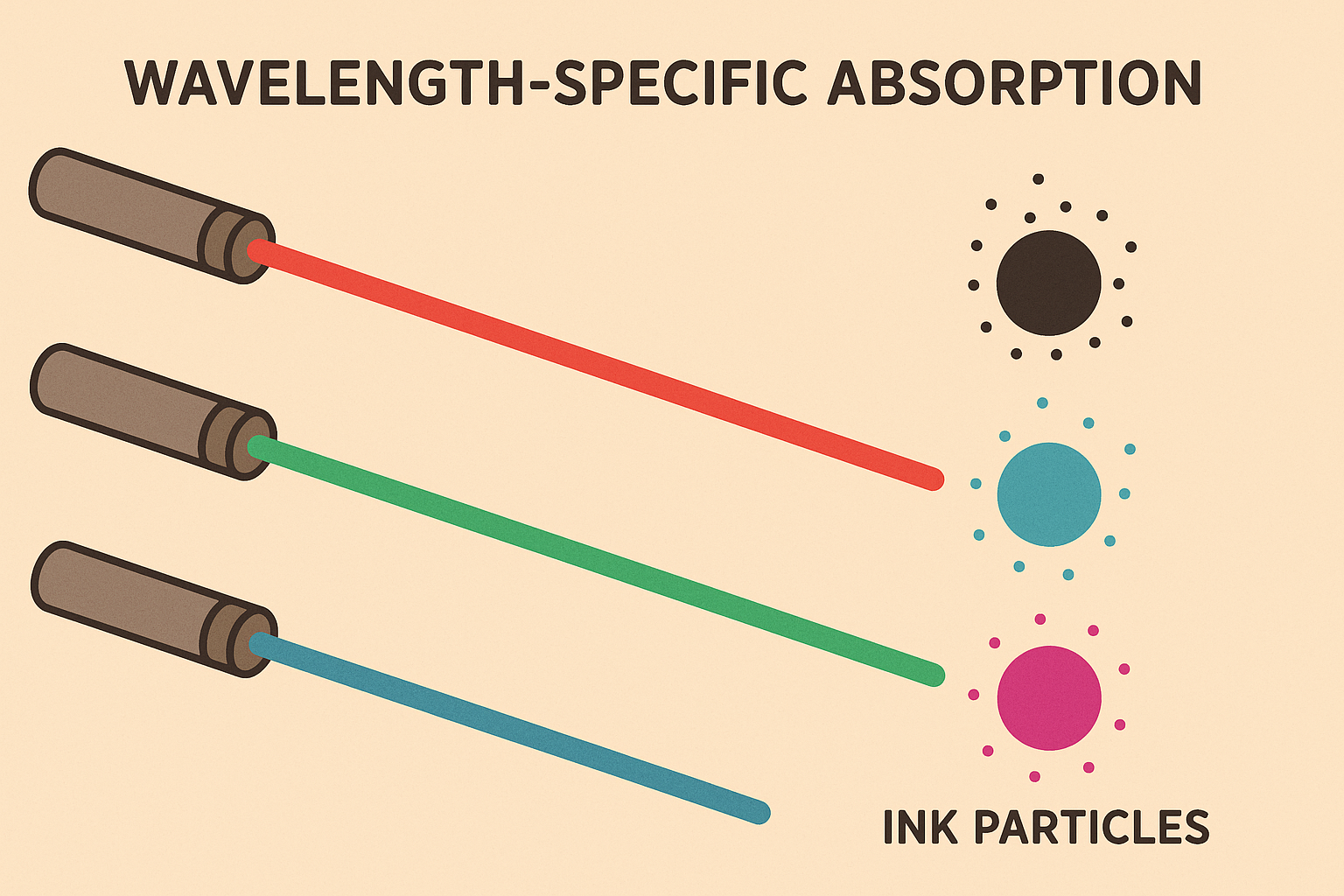Ink Tattoo Science: The Hidden Technology Revolution Transforming Body Art Forever

Look, I’m not gonna lie – when I first heard about tattoos that can change colors with your mood or monitor your health, I thought someone was pulling my leg. But here we are, living in the future where tattoo ink technology has gone completely bonkers in the best possible way.
With about 32% of Americans now rocking at least one tattoo according to Pew Research Center, we’re witnessing some seriously mind-blowing stuff happening in tattoo parlors. We’re talking about inks that use nanotechnology, smart materials that react to your body, and manufacturing processes that would make a pharmaceutical company jealous.
Table of Contents
- The Molecular Revolution in Modern Ink Tattoo Formulation
- Smart Ink Technologies That Respond to Your Body
- Light Science and How It Affects Your Ink Tattoo Longevity
- Biomechanical Integration and Skin Dynamics
- Quality Control Standards You Need to Know About
- Laser Removal Science and Future-Proof Ink Selection
- Ancient Wisdom Meets Modern Ink Tattoo Innovation
TL;DR
- Today’s tattoo inks use nanotechnology and smart materials that make your grandpa’s tattoo ink look prehistoric
- Some inks literally change colors based on your body temperature, UV light, or stress levels – it’s like having a mood ring permanently embedded in your skin
- Understanding how light affects different colors can save you from watching your beautiful tattoo turn into a faded mess
- Smart placement considering how your skin moves and ages means your tattoo will still look amazing decades from now
- The best inks are now made using pharmaceutical-grade standards – no more sketchy basement operations
- Different laser types target specific colors, so your ink choice affects how easy (or expensive) removal might be later
- Ancient tattoo cultures knew some stuff we’re just rediscovering with modern science
The Molecular Revolution in Modern Ink Tattoo Formulation
Here’s what blew my mind: today’s tattoo inks are basically tiny smart capsules that slowly release color over time. It’s like having a tattoo that refreshes itself – pretty wild, right?
According to ZipDo research, the ink used in tattoos can contain over 60 different ingredients, some of which may be harmful. That’s exactly why understanding what’s actually going into your skin matters more than ever.
I remember getting my first tattoo 15 years ago and watching it fade to that weird blue-gray color over time. If only I’d known about these new nano-encapsulated inks back then! The difference is like comparing a flip phone to the latest iPhone.
Nanotechnology Integration That’s Changing Everything
These new ink formulations use nanotechnology to create tattoos that stay vibrant way longer and actually work with your skin instead of against it. They’re literally building this stuff atom by atom to deliver pigments exactly where they need to go in your skin layers.
Time-Release Pigment Technology You Didn’t Know Existed
Get this – some inks now have tiny capsules that release fresh pigment over time as your body naturally processes the older stuff. It’s like having a tattoo that does its own touch-ups.
Think about it this way: traditional black ink might fade to that depressing blue-gray within 5-10 years, but these new nano-encapsulated versions keep releasing fresh black pigment for 20+ years. Your tattoo essentially maintains itself.
Molecular Size Optimization for Perfect Placement
The science nerds figured out the sweet spot – nanoparticles sized just right (between 10-100 nanometers) so they get absorbed perfectly by your skin cells without wandering around your body where they don’t belong.
This precision prevents that annoying blurring and spreading that made older tattoos look fuzzy over time. When particles are too big, they can’t penetrate properly. Too small, and they might end up in places you definitely don’t want them.
Smart Ink Technologies That Blow My Mind
Okay, this is where things get seriously sci-fi. We’re talking about tattoos that change color based on your body temperature, reveal hidden designs under UV light, or even monitor your health through pH changes. It sounds crazy, but it’s happening right now.
Body Heat Visualization That Reveals Hidden Designs
My buddy Jake got one of these thermochromic tattoos last year – it’s this dragon that’s normally black, but when he gets heated up (literally or figuratively), flames appear around it in bright red. The first time I saw it happen during a basketball game, my jaw hit the floor.
These temperature-sensitive compounds chill out in normal conditions but activate when your body heat increases even slightly. Working out, getting excited, stressed – your tattoo shows it all.
Invisible Ink That Appears Under UV Light
Picture this: you’re at work looking completely professional, but hit the clubs later and suddenly you’ve got this incredible glowing design under the blacklights. These photochromic compounds stay completely invisible under normal lighting but light up like Christmas under UV.
Perfect for people who need to keep things discrete during the day but want to show off amazing artwork when they’re out having fun. The ink contains special fluorescent molecules that only get excited by UV wavelengths.
pH-Sensitive Inks That Monitor Your Health
This one still seems like science fiction to me, but these inks can actually change color based on your body chemistry. Dehydrated? Stressed? Your tattoo might shift colors to let you know. It’s like having a personal health monitor that never leaves your side.
| Smart Ink Type | What Triggers It | Color Changes | Real-World Use |
|---|---|---|---|
| Heat-Reactive | Body temp (98-102°F) | Blue to pink, black to clear | Hidden designs, mood indicators |
| UV-Reactive | Blacklight exposure | Invisible to bright colors | Professional discretion, party reveals |
| pH-Sensitive | Skin chemistry (4.5-7.0) | Purple to green range | Health monitoring, hydration tracking |
| Electric-Responsive | Electrical stimulation | Full color spectrum | Interactive art, tech integration |
Biocompatible Polymers That Speed Healing
Here’s something that makes a real difference: modern inks include ingredients that actually help you heal faster. We’re talking about anti-inflammatory compounds and healing accelerators built right into the ink itself.
Integrated Healing Accelerators Built Into the Ink
The coolest part? These inks release healing compounds during your recovery process. Less swelling, less pain, faster healing, and a better-looking final result. The healing accelerators only activate when they encounter the inflammatory proteins your immune system produces after getting tattooed.
Smart Ink Technologies That Respond to Your Body
Look, I’m not gonna lie – when I first heard about tattoos that change colors based on your mood, I thought someone was messing with me. But here we are, living in the future where your ink can literally react to what’s happening inside your body.
The growing acceptance of tattoo culture is evident in recent news, as “City of Ink wins zoning fight” Atlanta Capital B News reports how Atlanta’s Mayor Andre Dickens intervened to protect City of Ink, a cultural landmark serving the artistic community for nearly two decades. This recognition comes at a perfect time as tattoo ink technology reaches unprecedented levels of sophistication.
Picture this: you’re at the gym, working up a sweat, and suddenly your tattoo starts revealing hidden designs as your body temperature rises. Or you’re out at a club, and under the blacklights, a completely different tattoo appears on your arm. It sounds like something out of a sci-fi movie, but it’s happening right now.
Interactive tattoo systems can now incorporate biosensors that detect changes in your body chemistry. Imagine having a tattoo that changes color when you’re dehydrated, stressed, or even when your blood sugar levels fluctuate. We’re moving toward a future where body art becomes functional health monitoring.
Light Science and How It Affects Your Ink Tattoo Longevity
Okay, here’s something that’ll save you heartbreak and money: not all tattoo colors are created equal when it comes to sun damage. I learned this the hard way when my first tattoo – this beautiful red rose – turned into what looked like a sad pink blob after a few summers of beach trips.
Research from ZipDo shows that approximately 80% of tattoos are black or grayscale, with color tattoos making up about 20%. This makes sense because color tattoos are way more susceptible to UV damage and need more advanced light-resistant formulations.
Here’s the deal: different colors absorb different types of light. It’s like how a black car gets hotter in the sun than a white one. Red and yellow inks? They’re basically magnets for the kind of light that breaks them down. Blues and blacks? They’re the tough guys that stick around for decades.
UV Degradation Resistance Engineering
The science nerds have figured out that you can actually predict how your tattoo will age based on the colors you choose and where you put it. That sleeve on your arm that’s always in the sun? It’s going to fade faster than something on your back that rarely sees daylight.
But here’s the cool part – some of the newer inks come with built-in UV protection. It’s like sunscreen mixed right into the ink itself. The engineering involves creating molecular structures that absorb harmful wavelengths and convert them to harmless heat.
Wavelength-Specific Protection Strategies
Different pigments absorb specific light wavelengths, and understanding these patterns helps create natural UV protection while making colors pop even more. Red pigments typically absorb green light around 520-530nm, while blue pigments absorb red light around 650-700nm.
Quantum Dot Integration for Unprecedented Brightness
This is where things get really wild – some inks now use quantum dots (the same technology in high-end TVs) to provide crazy bright colors that stay stable under different lighting conditions. These semiconductor nanocrystals give you unprecedented color purity and brightness.
Color Theory in Your Skin
How light bounces around through your skin layers dramatically affects how your tattoo looks. Advanced color theory helps predict how inks will appear once healed and how they’ll age over time – no more surprises when your tattoo looks different than expected.
Mathematical models can now predict how different ink colors will interact with various skin tones and melanin concentrations. This means you can actually see how your chosen colors will look on your specific skin tone before committing.
A red rose tattoo will look completely different on fair skin versus darker skin tones due to melanin interference. Modern color prediction models can show you exactly how your chosen red pigment will look on your specific skin tone, accounting for undertones and melanin density.
Biomechanical Integration and Skin Dynamics
This is where things get really interesting – and where a lot of people mess up without realizing it. Your skin isn’t just sitting there doing nothing. It’s constantly moving, stretching, aging, and regenerating itself. A good tattoo needs to work with all that movement, not against it.
These biomechanical considerations are especially important when planning large-scale tattoo designs that need to maintain their visual impact across different body areas with varying skin dynamics.
I’ve seen too many friends get beautiful tattoos in spots that just don’t age well. That intricate design on your wrist? It’s going to blur because your wrist moves constantly. That detailed piece across your ribcage? Better hope you don’t gain or lose weight, because it’s going to stretch or scrunch.
Collagen Matrix Interaction Strategies
The smart tattoo artists – the ones who really know their stuff – they think about how inks interact with collagen fibers and elastin networks before they even start drawing. They know where your skin naturally folds, where it stretches, and how those areas are going to look in 10 or 20 years.
Tension Line Analysis for Long-Term Success
Your skin has these natural tension lines – kind of like the grain in a piece of wood. Work with them, and your tattoo stays sharp. Work against them, and you’re asking for trouble down the road.
Skin tension varies dramatically across your body. Areas with high mechanical stress, like joints that move a lot, need different ink placement strategies than stable areas that barely move.
Cellular Regeneration Considerations
Your skin is constantly renewing itself – good tattoo placement works with this process instead of fighting it. Understanding natural skin cell turnover rates helps predict how tattoos will evolve and what maintenance might be needed.
Pigment Movement Modeling
Computer models can actually predict how ink particles will migrate through your tissue over time. Some spreading is inevitable, but it can be planned for and managed through proper depth control and particle size selection.
| Body Location | Skin Thickness | Collagen Density | Movement Factor | How It Ages |
|---|---|---|---|---|
| Upper Arm | 2-3mm | High | Low | Looks great forever |
| Wrist | 1-2mm | Medium | High | Lines might blur |
| Ankle | 1.5-2mm | Medium | High | Could get distorted |
| Back | 3-4mm | High | Low | Ages like fine wine |
| Fingers | 1-1.5mm | Low | Very High | Fades significantly |
Quality Control Standards You Need to Know About
Let me tell you something that might shock you: not all tattoo inks are regulated the same way. Some are made in facilities that are cleaner than operating rooms, while others… well, let’s just say you wouldn’t want to know where they come from.
The good news is that the top ink manufacturers now follow the same standards as pharmaceutical companies. We’re talking about the same level of cleanliness and testing that goes into making your prescription medications.
Pharmaceutical Manufacturing Standards
The best ink manufacturers literally follow FDA pharmaceutical guidelines, including cleanroom production, batch tracking, and comprehensive contamination testing. Manufacturing facilities maintain controlled environments with filtered air, sterile equipment, and documented procedures for every step.
Steps for Ink Safety Verification:
Here’s what you should ask your tattoo artist (and don’t feel weird about asking – it’s your body):
- Research Manufacturer Credentials – Are they FDA registered with pharmaceutical-grade certifications?
- Request Batch Testing Documentation – Can they show you heavy metal screening and sterility test results?
- Check Expiration Dating – Do the inks have proper shelf-life labeling and storage requirements?
- Verify Ingredient Transparency – Will they provide complete ingredient lists and safety sheets?
- Investigate Recall History – Have there been any past safety issues or product recalls?
A good artist will be happy to answer these questions. If they get defensive or brush you off, that’s a red flag the size of Texas.
Performance Testing Protocols
Advanced testing methods can actually simulate decades of skin aging and environmental exposure to predict what your tattoo will look like in 20 years before you even get it. Accelerated aging chambers expose ink samples to controlled UV radiation, temperature cycling, and chemical exposure.
Artificial Weathering Systems
Specialized equipment exposes ink samples to concentrated UV radiation equivalent to years of sun exposure, predicting fade rates and color shifts before application. These testing chambers can simulate decades of environmental exposure in just weeks.
Comprehensive Biocompatibility Assessment
Cellular toxicity studies using human skin cell cultures can identify potential allergic reactions or long-term health effects before inks reach the market. This testing prevents serious complications by identifying problematic ingredients before they’re used in human applications.
The The importance of quality control in the tattoo industry is highlighted by ongoing community events like the “Derry to hold the 13th Maiden City Ink tattoo convention” Derry Journal reports, where renowned artists from around the globe gather to showcase their work, emphasizing the professional standards and artistic excellence that define modern tattooing.
Laser Removal Science and Future-Proof Ink Selection
Nobody likes to think about tattoo removal when they’re getting inked, but hear me out – understanding how removal works can actually help you make better choices from the start.
According to ZipDo research, the tattoo removal industry is projected to be worth over $75 million globally by 2024, with laser tattoo removal typically costing between $200 and $500 per session, depending on size and color. Understanding removal science becomes crucial when considering the true costs of tattoo removal and how different ink formulations affect the overall expense and time investment.
Different colors require different types of lasers to remove. Black and dark blue? Pretty easy to zap away. Green and yellow? Good luck with that – they’re stubborn as hell. White ink? Don’t even get me started. Sometimes laser treatment actually makes white ink darker instead of removing it.
Wavelength-Specific Absorption Patterns
Different ink colors absorb specific laser wavelengths, creating targeted heating that breaks molecular bonds without frying surrounding tissue. Red inks respond best to 532nm wavelengths, while black and blue inks fragment optimally under different frequencies.
Green ink presents unique challenges because it often contains chromium oxide, which requires multiple wavelengths for effective breakdown. Yellow pigments frequently incorporate cadmium compounds that resist most laser wavelengths entirely.
Q-Switched vs. Picosecond Technology Impact
The newer removal technology is getting scary good. These picosecond lasers can shatter ink particles so small that your body just absorbs them naturally. Shorter laser pulses create more efficient particle shattering through pressure waves rather than heat, reducing sessions needed and minimizing skin damage.
Color-Wavelength Matching Protocols
Understanding which wavelengths target which colors helps you make informed decisions about ink selection if you think you might want removal options later. Some colors are notoriously difficult to remove completely.
Removable Ink Technology Development
But here’s the kicker – some of the newest inks are being designed to be removable from day one. Think about it: what if you could get a tattoo knowing that if you ever wanted to change it or remove it completely, it would only take a couple of laser sessions instead of dozens?
Controlled Degradation Systems
Advanced ink formulations use polymer carriers designed to fragment predictably under specific laser wavelengths, enabling complete removal in fewer sessions with reduced scarring risk. The polymer shells protect pigments during normal wear but dissolve rapidly when exposed to targeted laser energy.
Triggered Dissolution Mechanisms
Smart ink systems can be engineered with molecular switches that respond to specific laser frequencies, allowing for selective removal of tattoo elements while preserving others. Imagine being able to edit your tattoo digitally.
Imagine getting a complex sleeve tattoo where the background elements use traditional permanent inks, but the foreground details use removable ink technology. Years later, you could selectively remove just the foreground elements and replace them with updated designs while keeping the foundational artwork intact.
Ancient Wisdom Meets Modern Ink Tattoo Innovation
Here’s something that’ll blow your mind: some of the “cutting-edge” tattoo techniques we’re discovering today were actually used by ancient cultures thousands of years ago. They just didn’t have the science to explain why their methods worked so well.
The cultural significance of traditional ink formulations connects deeply with understanding tribal tattoo meanings and their historical context in various indigenous communities. These weren’t primitive formulations – they were highly sophisticated for their time.
Polynesian tattoo masters used to burn specific types of nuts to create their black ink. Turns out, those nuts produced carbon particles that were the perfect size for creating deep, long-lasting tattoos. Native American tribes mixed their inks with plant saps that had natural antibiotics – no wonder their tattoos healed so well.
Indigenous Pigment Systems Worth Studying
Traditional cultures used carbon black from specific wood sources, mineral ochres, and plant-based dyes that created inks with unique aging properties and cultural significance. Polynesian cultures burned kukui nuts to create carbon black with specific particle sizes that penetrated skin optimally.
Wood Species Impact on Ink Quality
Different wood types used for carbon black production create varying particle sizes and chemical compositions, affecting both color depth and longevity. The source material matters more than you’d think. Hardwoods produce finer carbon particles that create deeper blacks, while softwoods generate larger particles with different optical properties.
Sacred Geometry and Ink Interaction
Traditional cultures often matched specific ink formulations to particular design patterns, understanding that certain pigments enhanced the spiritual or cultural significance of geometric arrangements. There was deep knowledge behind these choices that modern science is only beginning to appreciate.
Modern Biomimetic Applications
Modern ink manufacturers are incorporating traditional ingredients into advanced formulations that combine cultural authenticity with safety standards. We’re learning from the past to improve the future.
Traditional Healing Integration
Contemporary inks increasingly include traditional healing compounds such as turmeric, aloe extracts, and mineral clays that were historically used to promote healing and reduce inflammation during tattooing. This integration of traditional healing compounds with modern ink technology aligns perfectly with comprehensive understanding of tattoo healing science and how natural ingredients support the recovery process.
Turmeric contains curcumin, which has proven anti-inflammatory properties that can reduce swelling and promote faster healing. Aloe vera provides cooling relief and contains polysaccharides that stimulate skin regeneration. These natural compounds are now being incorporated into ink carriers using modern encapsulation techniques.
The complexity of modern ink technology makes design planning more critical than ever. With advanced inks offering possibilities such as color-changing properties and enhanced longevity, choosing the right design becomes a sophisticated process requiring both artistic vision and technical understanding.
Tattoo Generator IQ bridges this gap by combining cutting-edge AI technology with comprehensive educational resources. Our platform helps you understand what your tattoo will look like and how it will interact with advanced ink technologies through advanced color simulation, technology integration guidance, and long-term planning resources.
Ready to explore how advanced ink technology can enhance your tattoo vision? Visit Tattoo Generator IQ to discover designs optimized for the latest innovations in tattoo ink science.
Final Thoughts
Look, I know this is a lot of information to digest. When I started researching this stuff, my head was spinning too. But here’s the thing – getting a tattoo is a big decision, and you deserve to know what you’re getting into.
The tattoo world has come so far from the days of sketchy parlors and questionable ink. We’re living in an era where your tattoo can literally change colors, monitor your health, and be engineered for easy removal if your tastes change. That’s incredible.
But with all these options comes responsibility. You can’t just walk into a shop and point at something on the wall anymore (well, you can, but you shouldn’t). The more you know about inks, placement, and long-term care, the better your tattoo is going to look and the happier you’re going to be with it.
My advice? Do your homework. Ask questions. Find an artist who knows about this new technology and isn’t afraid to use it. Your tattoo is going to be with you for a long time – might as well make sure it’s the best it can be.
And hey, if all this science talk makes your head hurt, just remember the basics: choose quality inks, find a great artist, take care of your skin, and don’t cheap out on something that’s going to be on your body forever. Future you will thank present you for making smart choices.

